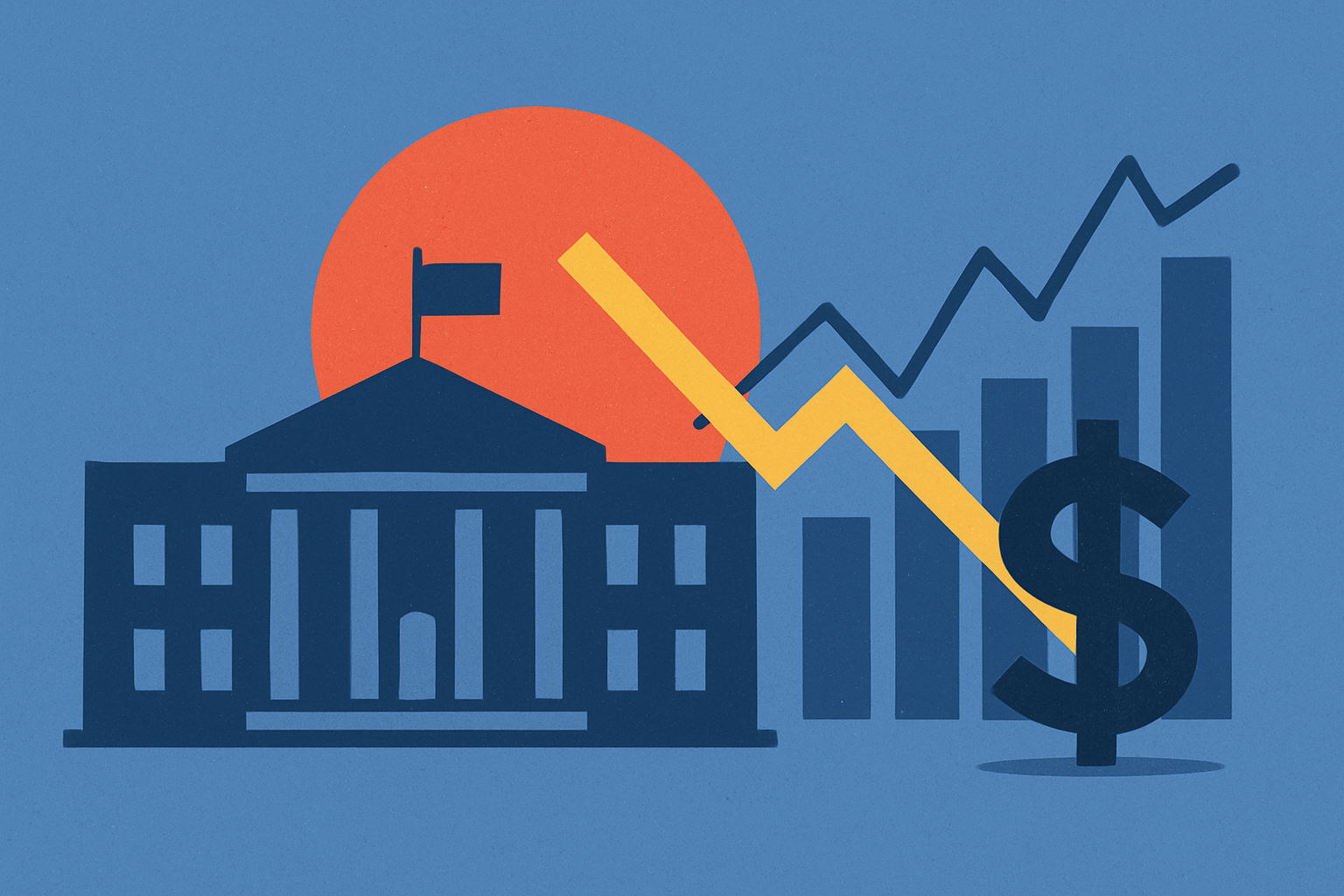The U.S. federal government shutdown entered its third day on October 3, leaving investors facing an unusual paradox: elevated political risk without corresponding market turmoil. Historically, shutdowns trigger spikes in volatility and erode sentiment, but this time equities are holding steady and even leaning into a risk-on posture. What explains the resilience—and is it sustainable?
Markets Focus on the Fed, Not Washington Gridlock
Despite the shutdown halting “non-essential” federal functions and delaying key economic data releases—including the September jobs report—Wall Street appears largely unfazed. The S&P 500 has edged higher this week, supported by growing expectations that the Federal Reserve could lean toward rate cuts as early as Q1 2026 if fiscal uncertainty weighs on growth.
According to CME FedWatch data, futures pricing now implies a 65% probability of a rate cut by March, compared to under 50% before the shutdown began. In short, investors are betting that the political stalemate could accelerate the Fed’s policy pivot.
“Markets are more focused on the monetary outlook than on partisan battles in Washington,” noted Quincy Krosby, Chief Global Strategist at LPL Financial, in comments to Bloomberg. “Unless the shutdown drags on for weeks and starts affecting confidence or liquidity, equities will likely remain supported.”
Why This Matters for Investors
While the market’s calm may reassure some, investors should be careful not to underestimate the risks. A prolonged shutdown would:
- Delay critical economic data, reducing transparency for both the Fed and investors.
- Disrupt federal spending, particularly in defense and infrastructure contracts.
- Erode consumer and business confidence, if workers face missed paychecks or agencies reduce operations.
Past episodes highlight the potential cost. The 2018–2019 shutdown, the longest in history, shaved an estimated $11 billion off U.S. GDP, according to the Congressional Budget Office (CBO).
With fiscal debates tied to both spending and future stimulus options, this shutdown could also intersect with upcoming discussions on deficit reduction and tax policy, amplifying its long-term significance.
Future Trends to Watch
- Resolution Timelines: The speed at which Congress reaches a compromise will determine the market’s next move. A short-lived shutdown may reinforce investor resilience, while an extended one could shift sentiment sharply.
- Earnings Season: Q3 earnings kick off in mid-October. If corporates cite shutdown disruptions in guidance, expect heightened volatility.
- Bond Market Signals: Treasury yields have dipped slightly, reflecting safe-haven buying. A prolonged shutdown could see yields move lower still, particularly on the short end of the curve.
- Sector Impacts: Defense contractors, government IT providers, and infrastructure firms may face project delays. Conversely, rate-sensitive sectors like real estate and tech could benefit if Fed cut bets strengthen.
Key Investment Insight
Investors should view the shutdown as less of an immediate shock and more of a potential slow-burn risk. Equity markets may continue to shrug off political noise if the Fed narrative dominates. However, fixed income markets and government-dependent sectors deserve closer monitoring.
For long-term investors, opportunities may emerge in rate-sensitive equities if policy easing comes sooner than expected. At the same time, caution is warranted in industries reliant on federal contracts or discretionary spending.
As Washington grapples with fiscal brinkmanship, markets are proving remarkably resilient. But resilience can quickly turn to fragility if delays extend and confidence wanes. Staying nimble and tuned to both monetary and fiscal developments will be critical in the weeks ahead.
For more daily insights on politics, markets, and investment trends, follow MoneyNews.Today—your trusted source for navigating today’s market realities.





